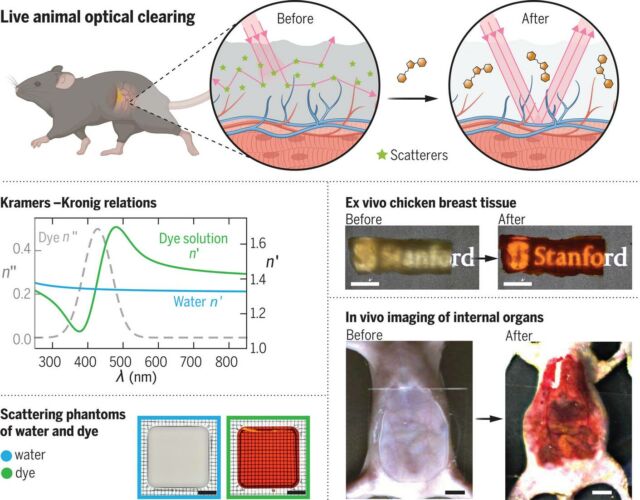 Illustration of skin tissues rendered transparent following saturation by FD&C Yellow 5. Credit Keyi “Onyx” Li/U.S. National Science Foundation
Illustration of skin tissues rendered transparent following saturation by FD&C Yellow 5. Credit Keyi “Onyx” Li/U.S. National Science Foundation
Scientists have developed a way to make skin transparent, which was tested on mice.
Stanford University materials scientist Zihao Ou and his team developed a safe dye that makes tissues transparent by adjusting how light scatters in the fluids around cells.
This unexpected method, which involves applying a food-safe dye, was reversible in animal tests and could be used for various medical purposes, including detecting injuries, monitoring digestive issues, and spotting cancers.
The researchers tested this approach on rodents with a US FDA-approved dye called tartrazine, also known as FD&C Yellow No. 5, commonly found in snack foods, candies, beverages, medicines, and cosmetics.
 Achieving optical transparency in live mice with absorbing dye molecules. The illustrations was prepared using BioRender.com
Achieving optical transparency in live mice with absorbing dye molecules. The illustrations was prepared using BioRender.com
The researchers write:
“Our approach … presents opportunities for visualizing the structure, activity, and functions of deep-seated tissues and organs without the need for surgical removal or the replacement of overlying tissues with transparent windows.”
source The journal Science





Leave A Comment